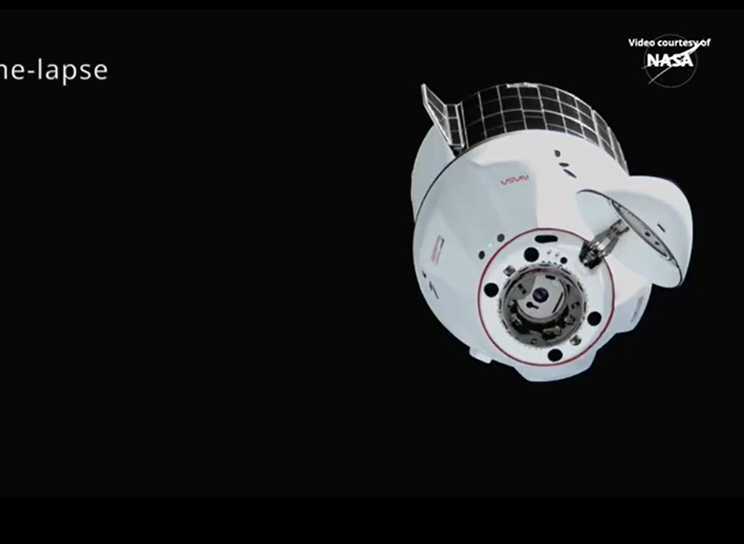SpaceX's Dragon cargo capsule arrived at the International Space Station (ISS) on April 22, at 1240 UTC), after a 28-hour journey from its launch on April 21. The capsule is carrying over 3 tons of supplies and scientific hardware for the Expedition 73 crew currently on the orbital lab.
The Dragon capsule is scheduled to remain at the ISS for about a month before returning to Earth with completed experiments and other cargo.
================
A SpaceX Falcon 9 rocket carrying the uncrewed Cargo Dragon spacecraft lifted off at 0815 UTC from Launch Complex 39A (LC-39A) at NASA’s Kennedy Space Center in Florida. The spacecraft is carrying more than 3 tons of supplies and scientific hardware to the orbiting laboratory for NASA.
The Falcon 9's first stage booster successfully performed a vertical, propulsive touchdown at SpaceX's Landing Zone-1, at Cape Canaveral Space Force Station, about eight minutes after launch, marking the third launch and landing for this booster.
The NASA's Cargo Resupply Services mission (CRS-32 or SpX-32), is the 32nd cargo mission to the International Space Station (ISS) for SpaceX and the fifth flight for this particular Dragon spacecraft, which previously flew on CRS-22, CRS-24, CRS-27, and CRS-30.
Dragon is scheduled to autonomously docked to the zenith port of the ISS’s Harmony module on Tuesday morning (April 22) around 1220 UTC. The arrival with be monitored from the space station by NASA astronaut Jonny Kim and JAXA astronaut Takuya Onishi.
CRS-32 cargo includes about 3,040 kilograms of supplies and science payloads, including food, essential equipment, and other provisions for the for the ISS Expedition 73 crew.
The scientific experiments aboard CRS-32 include Investigations such as a demonstration of refined maneuvers for free-floating robots, an enhanced air quality monitoring system for future Moon and Mars missions, and two atomic clocks to study fundamental physics concepts like relativity and global time synchronization.
Hardware aboard include spare parts like a catalytic reactor replacement unit for the ISS water recycling system, a food reach tool assembly, reducer cylinder assemblies for emergency oxygen supply, a planar reflector assembly for spacecraft navigation, and a multifiltration bed to improve water quality.
The Dragon is scheduled to remain docked for about one month, departing in May 2025 to return time-sensitive research and cargo to Earth, splashing down off the coast of California.
CRS-32 mission supports ongoing research aboard the ISS, contributing to advancements in biology, biotechnology, physical sciences, and Earth and space science. The delivery of critical hardware ensures the station’s operational continuity, while experiments pave the way for future exploration missions.















